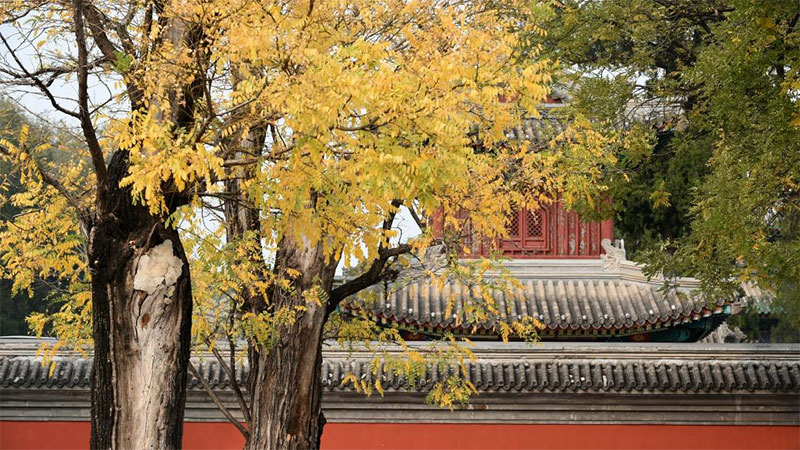China's Chongqing gets creative with cultural relic promotion

People visit the Beicang Cultural and Creative Block in southwest China's Chongqing Municipality, June 3, 2022. (Xinhua/Wang Quanchao)
CHONGQING, Nov. 1 (Xinhua) -- Pickaxes, trowels and Luoyang shovels are a common enough sight at archaeological excavations, but at one cafe in southwest China's Chongqing Municipality, such implements adorn the walls.
Together with over 30 pieces of replica ancient pottery on display in a cabinet, and three posters featuring a white tiger originating from ancient Chinese mythology, they identify the venue as an archeology-themed cafe.
Launched by the Chongqing municipal institute of cultural relics and archaeology, in cooperation with a cultural company, the coffee shop not only caters to regular customers, but also holds salons to make archaeological knowledge more accessible to the public, according to co-founder Zhao Qingyu.
The cafe has now become a popular space for young people, especially those interested in history and art, providing an inspiring place to chill over a coffee.
"History, which can be abstract and heavy, is transformed here into vivid and lively handicrafts and peripheral products," said Deng Yulian, a local college student and a regular customer. "The combination of historical relics and creative cultural products is particularly interesting."
The archeology-themed cafe is one of several locations in Chongqing that have been using creativity to promote cultural relics, so as to help educate the public on the history and China's fine traditional culture.
In a quaint building at Chongqing's institute of cultural relics and archaeology, an immersive and interactive play set in the 1940s, is being staged. The audience can choose to play a dramatic role, influencing the development of the plot.
As an immovable cultural relic, the site has become a smash hit across the city, attracting hundreds of people every week. "We used to sit in the audience and watch the play, but now, for the first time, we were able to drive the story as a participant and connect the building with the play through our actions and the storyline," said an audience named Ju Qiang.
According to Qin Sisi, a project director with Chongqing Changjia Cultural Tourism Co., Ltd., the performance reflects a new approach to immovable cultural relics. "The building is not regarded simply as an exhibition hall or an item on display," said Qin. "Rather, we have combined its historical and cultural stories to create an immersive drama, and generated a new form of business by extending its cultural connotations."
China has made notable progress in the protection of cultural relics over the past 10 years, and has promoted the creative transformation and development of China's fine traditional culture.
By the end of 2021, there were 108 million pieces (sets) of state-owned movable cultural relics, and about 767,000 immovable ones. The total number of world heritage sites in China has reached 56, ranking second in the world, according to the Ministry of Culture and Tourism.
Official data shows that Chongqing has about 26,000 immovable cultural relics and over 1.48 million movable ones. The establishment of the archaeology-themed cafe and the immersive play project reflect Chongqing's efforts at promoting the charm of history and culture.
Bai Jiujiang, director of Chongqing's institute of cultural relics and archaeology, is optimistic about the future. Through the combination of archaeology with technology and tourism, China's fine traditional culture will generate more vitality, and cultural relics will appeal to wider audiences, said Bai.
Photos
Related Stories
- Young female cultural relics repairer brings ancient treasures back to life
- Prehistoric relics unearthed in China's Hunan
- Innovation brings Chinese cultural relics back to life for increasingly larger audience
- Ancient city site discovered in central China
- Cultural relics unearthed from Mausoleum of Han Dynasty emperor
- China's Gansu to exhibit highly-protected cultural relic next year
Copyright © 2022 People's Daily Online. All Rights Reserved.









